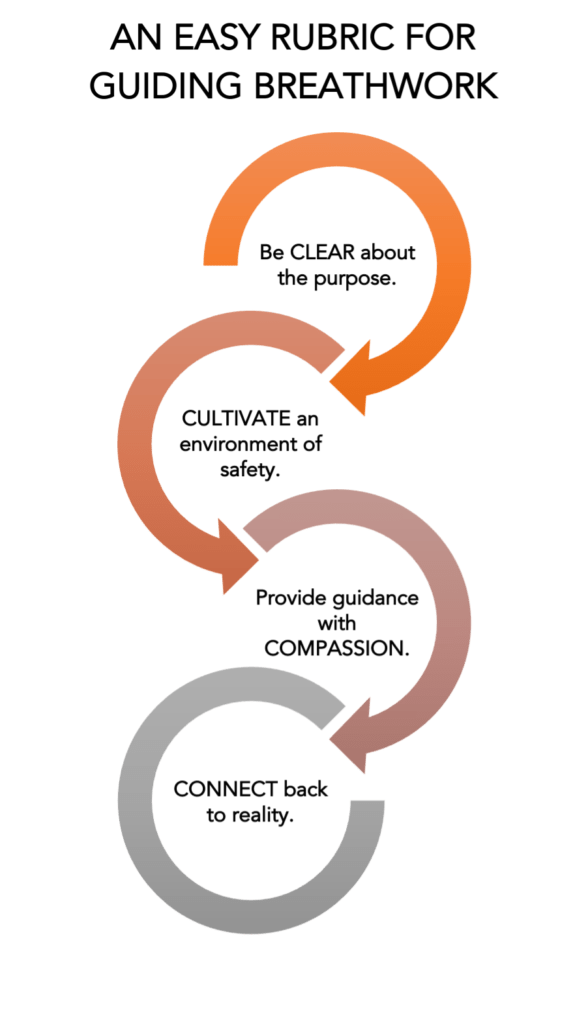For a beneficial change in your state of being, few tools are as powerful as the breath. That’s why Breathing as Fuel is one of 19 psychometrics we measure in the pioneering wellbeing leadership assessment, Be Well Lead Well Pulse®. As someone committed to developing healthier, more effective, and sustainable leadership in organizations and communities, you can learn how to help leaders positively cope with stress, manage their energy, and optimize their performance through intentional breath control.
TRY IT FOR YOURSELF! Experiment with this simple 8-minute practice, Counting Your Breath, and notice the effects it has on your body, mind, and emotions.
LEADERS ARE NOTORIOUSLY LOW IN USING THE POWER OF THEIR BREATH
As measured by Be Well Lead Well Pulse®, leaders worldwide score particularly low when asked about the extent to which they use their breath to make positive shifts in their state of being. Possible reasons why?
- They simply may not be aware that a focus on breathing could strengthen their leadership effectiveness.
- A breath practice isn’t part of their cultural conditioning at work or at home.
- Breathwork is often so simple that it can feel boring and easy to discount.
- It can be confronting to experience the intense emotions that a dedicated breath practice may surface.
We come into the world with an inhalation. We leave this world with an exhalation. In between our entry and exit, breathing is our unfailing companion. Plus, it is accessible, reliable, and free to all. When you help leaders treat breath as a partner, how does it widen and deepen how they live and lead?
______________
THE MANY ADVANTAGES OF VOLUNTARY BREATH CONTROL
For the last three decades, I’ve integrated breathwork into leadership development interventions, whether 1:1 executive coaching, facilitating a team meeting, or delivering a transformational leadership journey. Here are four reasons why you may want to, too:
- Mindful breathing is good for health. Study after study highlights a life-enhancing relationship between mindful breathing and physiological benefits, such as improved blood pressure, reduced chronic pain, enhanced memory, a boost the immune system and energy metabolism, better heart rate variability, and as a potential offset to changes in gene expression caused by too much stress. (Check out this systematic review of the research on these and other psycho-physiological correlates of breath regulation.)
- A mindful breath is a counterbalance to the onslaught of noise and demands in our lives. Meditation teacher and Director of UCLA’s Mindfulness Awareness Research Center, Diana Winston, says it’s a revolutionary act to sit. I wholeheartedly agree! In our over-stimulated lives and workplaces, I believe it is revolutionary to pause for a mindful breath.
 When we are impulsive and reactive, a mindful breath is a helpful pattern-interrupt. Imagine the leader being caught in a cycle of self-criticisms or harsh judgments about others—(we’ve all been there!)—and spreading that toxicity to their teams. Breathwork can disrupt that pattern by sending signals to the brain and body that it’s okay to shift into a state of inner balance. This shift alone can help the leader gain distance and new perspective about their situation—and notice their cycle of negative thinking instead of being gripped by it. Breathwork may also improve a leader’s interoceptive awareness, the ability to identify and listen to the stress signals from the body which can lead to healthier management of their emotions.
When we are impulsive and reactive, a mindful breath is a helpful pattern-interrupt. Imagine the leader being caught in a cycle of self-criticisms or harsh judgments about others—(we’ve all been there!)—and spreading that toxicity to their teams. Breathwork can disrupt that pattern by sending signals to the brain and body that it’s okay to shift into a state of inner balance. This shift alone can help the leader gain distance and new perspective about their situation—and notice their cycle of negative thinking instead of being gripped by it. Breathwork may also improve a leader’s interoceptive awareness, the ability to identify and listen to the stress signals from the body which can lead to healthier management of their emotions.- A mindful breath promotes a positive shift in energy. Think of a person as an energy system where the mark of wellbeing is energy circulation. For thousands of years, cultures around the globe have offered a version of this idea—chi, life force, élan vital, mana, prana, ki—and they’ve activated energy flow for human and spiritual development through breath. Some breath practices, such as the bellows breath and kapalabhati breath, are recommended to increase feelings of arousal and wakefulness. Other breath practices, such as a lengthened exhalation, the 4-7-8 breath, alternate nostril breathing, the box breath, and the physiological sigh, enhance the feeling of calm. Underlying all breathwork is the ability of every person to make a constructive energy shift—consider that a simple, mindful breath can help a leader transform fatigue into vitality or anxiety into relaxation.
______________
AN EASY RUBRIC FOR GUIDING A BREATH PRACTICE IN LEADER DEVELOPMENT
As with all of us, the quality of leader’s breathing often governs the quality of their mental, emotional, and physical states. Through breath regulation, a leader can tap into their immediate, direct experience and gain greater insight into the thoughts, feelings, habitual patterns, and motivations driving them. This heightened awareness offers the groundwork for greater choice in how they frame their situation, as well as the next decisions or actions they take.
When using breathwork to support the wellbeing and development of a leader, experiment with this rubric of 4-C’s:
 1. Be CLEAR about the purpose. Why are you utilizing breathwork with this leader? Do you want to facilitate a boost in the leader’s energy or help them turn fragmented thinking into greater focus? Do you want to help the leader tap into deeper feelings about a challenge or invite them to relax? Knowing the purpose of the breathwork will help you choose the best breath practices.
1. Be CLEAR about the purpose. Why are you utilizing breathwork with this leader? Do you want to facilitate a boost in the leader’s energy or help them turn fragmented thinking into greater focus? Do you want to help the leader tap into deeper feelings about a challenge or invite them to relax? Knowing the purpose of the breathwork will help you choose the best breath practices.
2. CULTIVATE an environment of safety. Although breathwork is more popular in work settings today, participating in it may be new or uncomfortable to some leaders. Foster psychological safety by using these approaches:
- Offer the breathwork as voluntary. (“I’d like to guide us in a breath practice. Would you be willing to do an experiment with me?”)
- Give people a choice about closing their eyes. Most leaders enjoy their eyes closed during breathwork because it helps them turn their attention inward, away from distractions and toward themselves. However, some may feel nervous about shutting their eyes or simply prefer not to do so. They can still easily participate in breathwork by finding a stationary point, such as a spot on the wall or the floor, on which to softly gaze. It is always their choice.
- Get educated about reasons NOT to engage in breathwork. For example, energizing breaths are generally contraindicated for people with unmedicated high blood pressure. And, if a leader has a broken rib, doing a breath practice may be painful.
- Make breathwork a norm. When it becomes a habit for the leader, such as an integrated part of their team meetings, and they see the positive effects of it for themselves and others, it will stop feeling strange.
3. Provide your guidance with COMPASSION. Yes, compassion is the operative word here. You are helping others engage in a practice—the goal isn’t to be perfect but to contribute to a positive shift in being. This is about learning and growth for them (and for you.) Other considerations for guiding breathwork are:
- Create a script to lead the breath practice with words that are meaningful to you, particularly if this is your first time. The thought-work that goes into producing the script is also a good way to prepare yourself.
- Use action words that clearly tell the leader what to do. For example, saying, “Focus your attention on your breath” is verbally cleaner than, “I would like for you to focus your attention on your breath,” a statement with six unnecessary, and possibly sidetracking, words.
- Encourage ease and spaciousness. You don’t need to fill the air with words, but instead, provide simple instructions and allow room for the leader to connect with their direct experience. If you or the leader are straining through the breathwork then that’s a good signal to stop and, if desired, make any adjustments needed to begin the breath practice again with greater effortlessness.
- Do the breathwork with the leader as a partner in their development, instead of positioning yourself as an expert. This is about role-modeling that you, like all of us, are on the wellbeing journey, too.
4. CONNECT back to current reality. Help the leader transition from the active breathwork, along with the insights they gained from it, back to their work at hand. To do this, for example, at the end the breath practice you could:
- Ask them to notice the sounds in the room or the places where their body—their shoulders, arms, back, legs—connects with the chair where they’re seated.
- Invite them to notice the effects of the breathwork on their body, minds, emotions, and energy.
______________
A MINDFUL BREATH CAN BE A GATEWAY TO THRIVING LEADERSHIP
The turbulence of work and complexities of our world today require leaders who are more open, present, connected, generative, and well, instead of reactive, disengaged, and burnt out. It’s time for leaders to learn how to prioritize thriving for their teams, organizations, loved ones, and communities, as well as themselves.
This kind of leadership is empowered, in part, using breathwork. A discipline of mindful breathing can bring about expansive states from which to lead, such as empathy, equanimity, cooperativeness, and self-direction; plus, it is linked to self-transcendence, an essential quality of enlightened leadership which, described by psychologist Viktor Frankl, is “man reaching out beyond himself.”
For the wellbeing and effectiveness of leaders, practices for breath regulation can be used at almost any time, as examples:
- To interrupt anxious thoughts BEFORE a big presentation so that the leader brings greater clarity and vitality to it.
- With others DURING a team meeting to set a calm, steady tone for the work together.
- AFTER a crisis, such as to help a leader respond to a failed product launch with a sense of acceptance and learning.
- As a DAILY self-care ritual to make inner balance and wellbeing a foundation for leadership and life.
______________
READY TO LEARN MORE?
Do you want to learn more about the role mindful breathing plays in advancing the wellbeing, development, and effectiveness of leaders?
- Contact Wisdom Works at info@wisdom-works.com to access the Be Well Lead Well®) platform of assessments, bespoke programs, and services that help leaders in your organization develop new ways to make thriving a priority for their teams and work cultures, starting with themselves.
- Ask us about the Be Well Lead Well Pulse® Certified Guides in your region who can assist you. This growing global network of leaders and practitioners are committed to amplifying leadership effective through wellbeing around the world.
- Participate in our transformational certification program to get certified in Be Well Lead Well Pulse®, an assessment which measure 19 psychometrics of holistic wellbeing and stress resilience (including Breathing as Fuel) to bring a new capacity for wellbeing leadership into your organization.
We look forward to hearing from you!







What a great article to remind us of the power in the simple act of slowing down and breathing with intention. I try short breathing practices with my coaching clients, and most find it so valuable – a good reminder that they are in control of their mindset and can have an impact on their physical stress too.
Excellent, Jackie! If all of us practiced breathwork in our lives and with our clients, imagine the positive impact. Less reactivity, greater focus and calm – and an increased sense of wellbeing overall. Keep up the great work! : )